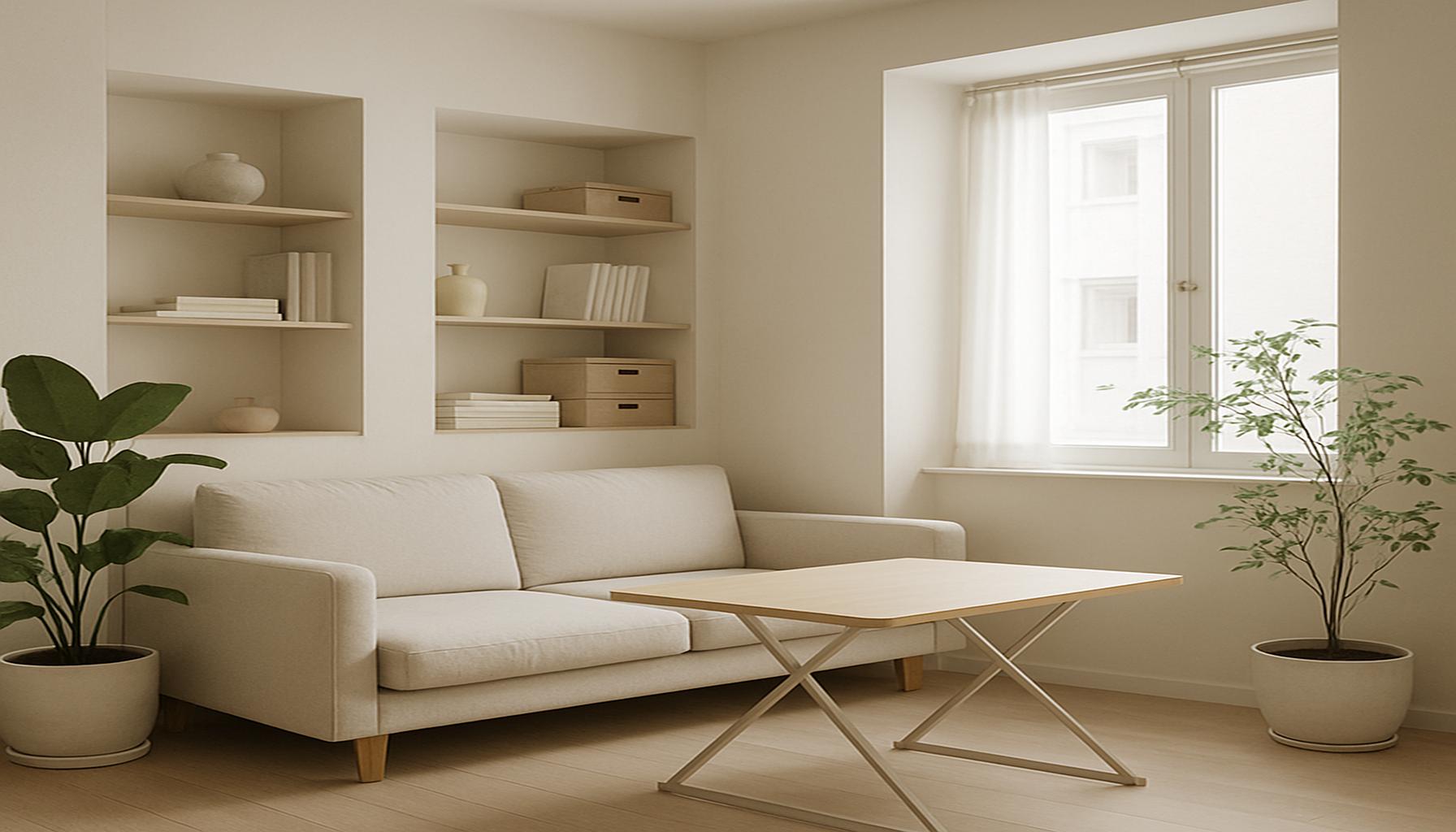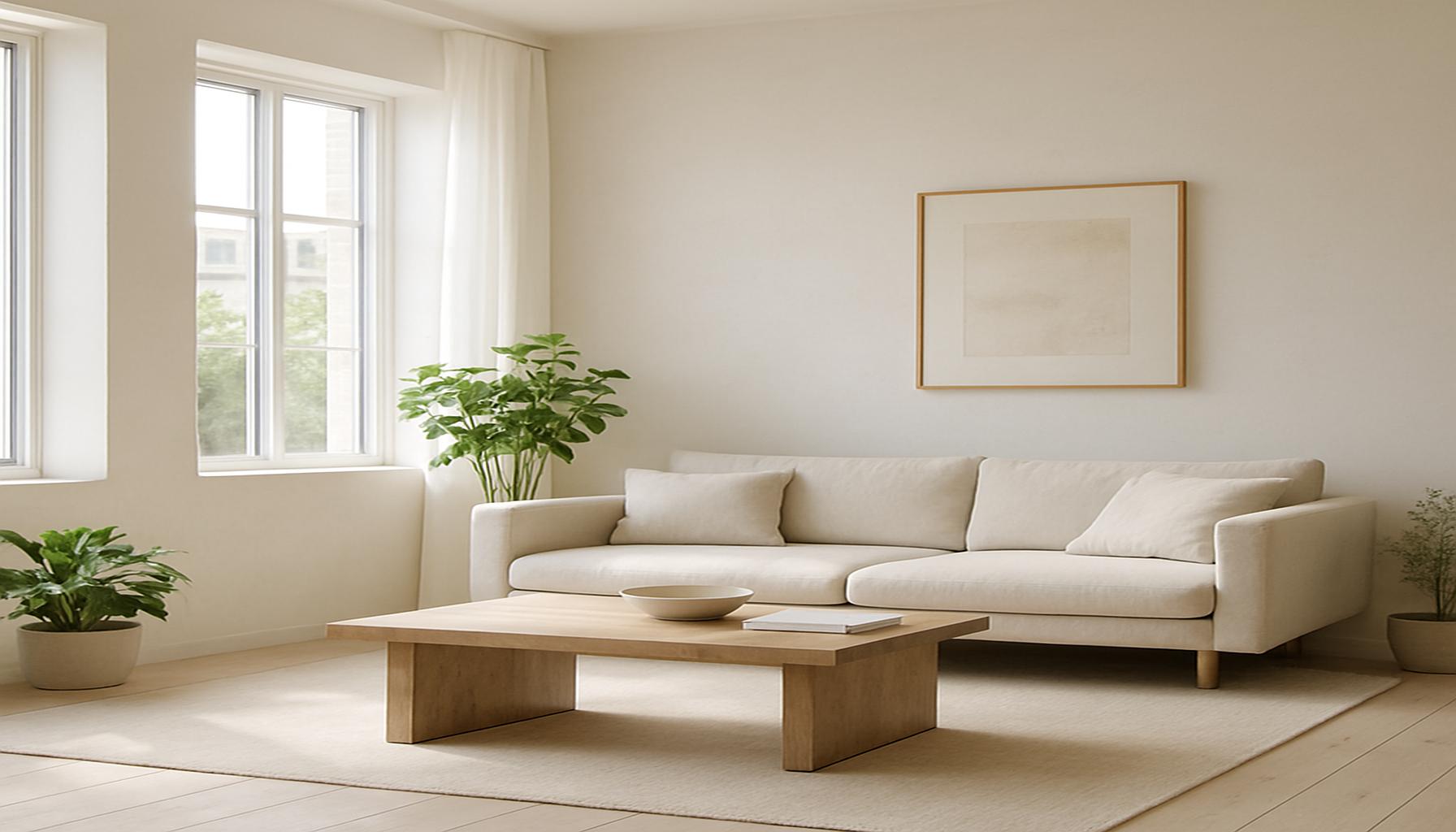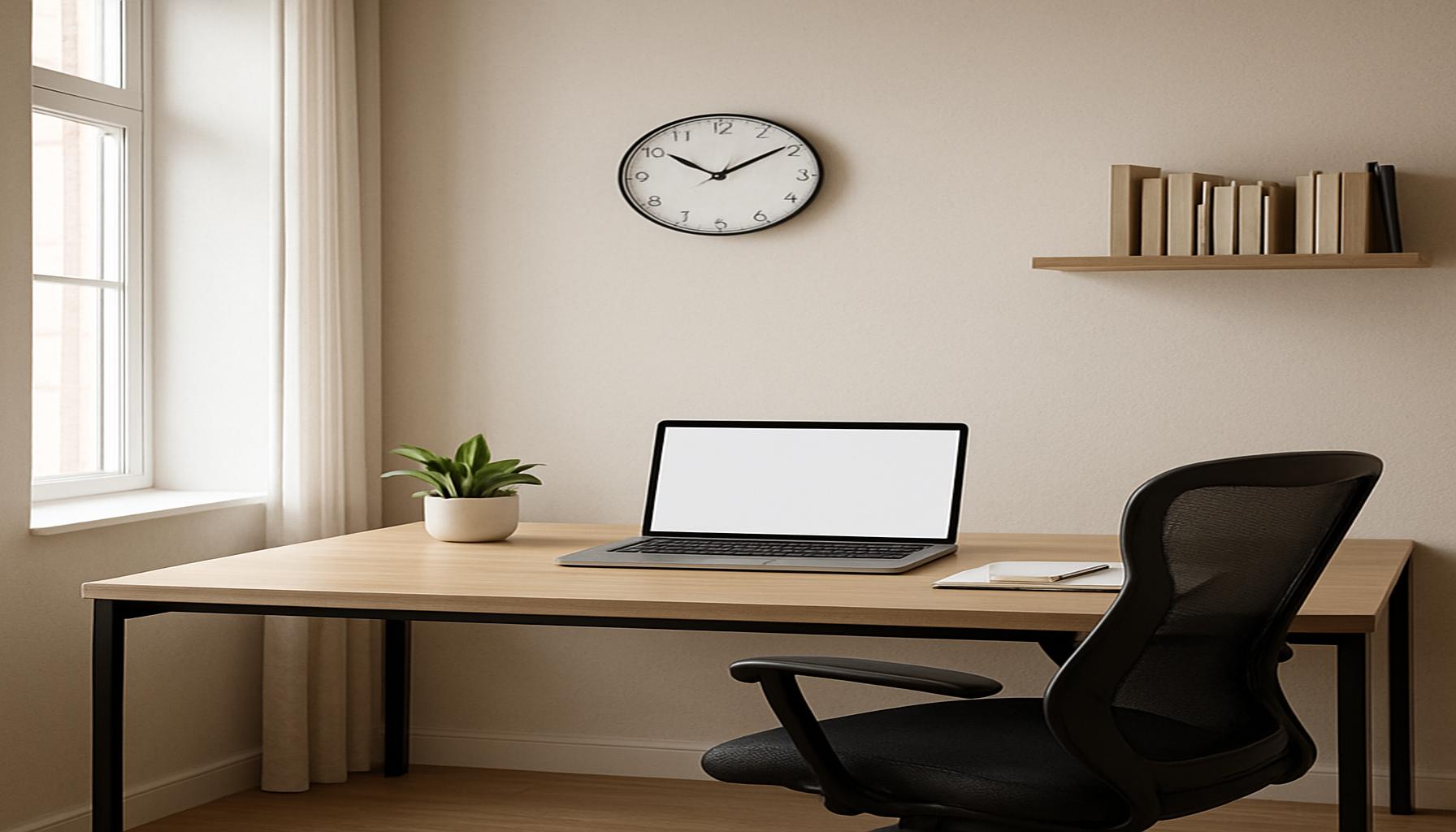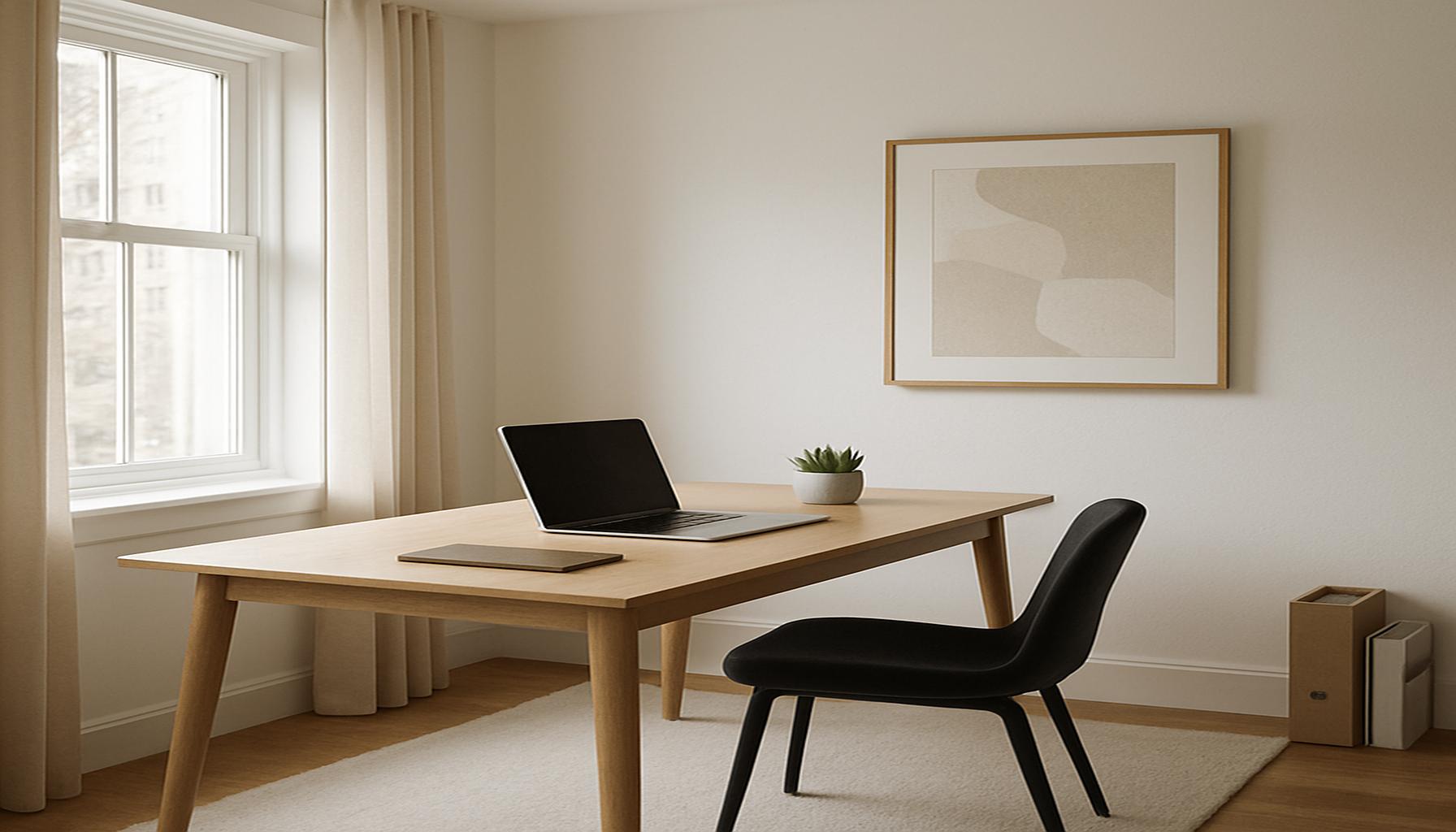How Minimalism Maximizes Space in Small Living Areas

In a world where urbanization is on the rise, the challenge of living in small spaces has never been more pressing. With more individuals and families opting for compact homes, the principles of minimalism offer a viable solution to not just make the most of limited square footage but to also cultivate a sense of peace and order.
Minimalism encourages decluttering and intentional living, allowing us to focus on what truly matters in our lives. This approach is particularly relevant for those who feel overwhelmed by their possessions and desire a more organized and functional environment.
In this article, we will explore the top 5 ways minimalism can optimize space in small areas, including practical strategies and insightful tips for creating a more harmonious living experience. Prepare to discover innovative ideas that can transform even the tiniest of spaces into a sanctuary of simplicity and style.
Top 5: How Minimalism Can Optimize Space in Small Living Areas
5. Multifunctional Furniture
Minimalism thrives on the concept that less is more, a philosophy particularly beneficial to those inhabiting small spaces. The strategic use of multifunctional furniture not only optimizes space but also enhances utility. This approach is vital when square footage is at a premium. For instance, a sofa bed is a brilliant example; by day, it provides a comfortable seating area, whereas by night, it transforms into a cozy bed. This dual functionality significantly preserves space.
But the possibilities do not end there. Imagine a coffee table equipped with hidden storage, offering a place to stash remote controls, magazines, or even extra blankets that would otherwise clutter your space. Ottomans deserve similar praise; when chosen with a storage compartment, they offer a trifecta of use—seating, storage, and as casual footrests.

Wall-mounted folding tables take efficiency a step further by collapsing and expanding as needed. By investing in such adaptable pieces, you turn your environment into a flexible canvas, showcasing the power of minimalism’s “less is more” mantra and highlighting how fewer items can perform myriad roles.
4. Decluttering and Minimalism
A cluttered space can be overwhelming, both physically and mentally. Establishing a regular decluttering routine can mitigate this, helping maintain a clean and organized home. Minimalism encourages a thoughtful examination of belongings, compelling us to ask whether the items in our lives truly serve a purpose or bring us joy.
Begin this transformative process by evaluating each item’s utility or sentimental value. Schedule regular intervals to review and pare down possessions, ensuring that what remains aligns with your minimalist vision. One effective strategy is observing the one-in-one-out rule—anytime a new item is introduced into your space, an old one should be released. This method helps keep possessions in equilibrium.
Decluttering physically unburdens space, while also crafting a tranquil mental environment. This clarity fosters focus and creativity, crucial for thriving in smaller living areas. In essence, decluttering serves not just as a practicality, but as a gateway to a more harmonious life.
3. Visual Space Optimization
The illusion of more space can be just as valuable as actual square footage in constrained environments. The concept of visual space optimization highlights the importance of strategic placement and design aesthetics in a room. Minimalism advises that when furniture and decor are mindfully arranged, and when lighter colors are employed, a room can feel significantly more expansive.
Consider the strategic use of mirrors. By reflecting natural and artificial light, mirrors not only brighten a room but also lend a sense of depth and openness. Vertical storage solutions draw the eye upward, creating the illusion of height, and making ceilings appear taller than they are.
A cohesive color palette further enhances this effect. When walls, furniture, and decor all belong to a unified color scheme, the room appears to flow naturally, minimizing visual clutter. In conjunction, these strategies artfully trick the eye, maximizing perceived space while adhering to minimalist ideals.
2. Smart Storage Solutions
In any small space, maximizing storage is essential, and minimalism encourages the use of smart storage solutions. Every square inch counts, so integrated storage options not only save space but can beautifully complement home aesthetics. For instance, storage containers designed to fit underneath beds take advantage of otherwise unused space.
Floating shelves elevate storage by getting items off the floor, offering convenient access to essentials and display space for cherished items, all while maintaining a tidy appearance. Built-in benches with hidden compartments provide dual-purpose seating, ideal for dining or living areas, without adding clutter.
These thoughtful storage solutions contribute to an organized, serene environment, maximizing available space, and ensuring your home is both practical and peaceful. By embracing smart storage, minimalism becomes a tool through which you reshape the limited space into a haven of organization and simplicity.
1. Living with Intention
At the heart of minimalism is the principle of living with intention. This philosophy invites us to consciously curate our environments to reflect what truly matters. By focusing on quality over quantity, you choose to inhabit your life with select possessions that have lasting value and significance.
Engaging in this practice starts with setting clear goals for each space. Determine what you wish to accomplish within your home and how best it can serve you. Curate decor and belongings by questioning their value in your life, ensuring they add purpose and joy.
Practice gratitude regularly. Reflect on the space you have and the items within it, nurturing a profound appreciation that goes beyond possession. This mindset not only optimizes space but profoundly enriches life quality. Indeed, following the principle of living with intention is the most impactful way minimalism can transform small environments, turning them into sources of happiness and contentment.
| Category | Key Features | Advantages | Disadvantages | Ideal Users |
|---|---|---|---|---|
| Space Optimization | Utilization of vertical space and multi-functional furniture. | Creates an illusion of more space while providing necessary functionality. | May require initial investment in high-quality furniture. | Individuals in small apartments or homes seeking efficiency. |
| Aesthetic Appeal | Clean lines and uncluttered surfaces. | Promotes a calming environment, enhancing emotional well-being. | May be perceived as cold or sterile without personal touches. | Homeowners and renters who prioritize design and ambiance. |
| Decluttering | Systematic removal of unnecessary items. | Reduces stress and provides clarity in living spaces. | Emotional difficulties in letting go of items. | Minimalists or those wanting to lead a simpler lifestyle. |
| Enhanced Functionality | Furniture designed for multiple uses, such as storage beds. | Maximizes utility while minimizing the footprint of items. | Can lead to compromises on style for the sake of functionality. | Families and young professionals needing adaptable spaces. |
As examined in the table, the minimalist approach can significantly transform small living environments by promoting space optimization, enhancing aesthetic appeal, encouraging decluttering, and improving functionality. For instance, utilizing vertical space through shelves not only frees up floor area but also provides storage that can showcase personal items meaningfully. Multi-functional furniture, such as sofas that convert into beds or tables with built-in storage, can drastically declutter a small room while still providing necessary accommodations for daily life.Moreover, a minimalist design approach offers the opportunity to cultivate a more aesthetically pleasing and emotionally satisfying environment. The clean lines and simple decor can foster a sense of tranquility, essential in today’s fast-paced world. However, achieving this balance can be tricky; without careful planning, a purely minimalist environment might come across as void of personality or warmth.Decluttering is another essential advantage of minimalism, allowing individuals to reassess their belongings critically. Engaging in this practice not only frees up physical space, but it can also contribute to mental clarity and stress reduction. It does, however, pose a psychological challenge for those attached to sentimental items, but the rewards can be transformative.Finally, enhanced functionality is a crucial aspect where minimalism thrives. The introduction of smart storage solutions can mean the difference between clutter and organized living. Families and young professionals can benefit from spaces that flexibly adapt to their dynamic lifestyles. Thus, the minimalist approach emerges as a prominent solution for anyone seeking to maximize their living experience in compact environments.
Frequently Asked Questions about Minimalism in Small Spaces
How can minimalism help optimize small living spaces?
Minimalism primarily focuses on reducing clutter and emphasizing the use of essential items. By adopting a minimalist approach, individuals can free up space, making smaller homes feel larger and more open. Strategic furniture choices, such as multi-functional pieces, contribute to an efficient use of space, while a reduced amount of decor can minimize visual clutter.
What are some practical tips for implementing minimalism in tiny areas?
Start by decluttering and assessing what is truly necessary. Opt for furniture that serves multiple purposes, like a sofa bed or a dining table with storage. Use vertical space intelligently by installing shelving or hooks for storage. Mirrors can also create the illusion of more space by reflecting light and opening up the room.
Are there any risks or downsides to a minimalist lifestyle in small spaces?
While minimalism can lead to a more organized home, some individuals may find it challenging to part with sentimental items or to adjust to a less decorated environment. It’s important to balance minimalism with personal comfort; not every decorative item must be eliminated. Ultimately, minimalism should enhance, not restrict, one’s living experience.
Can minimalism be aesthetically pleasing, or does it mean sacrificing style?
Minimalism is far from dull; it can actually lead to an elegant and sophisticated aesthetic. The style emphasizes clean lines, neutral colors, and quality over quantity. By focusing on a few well-chosen pieces, spaces can feel both stylish and calming. Minimalism celebrates purposeful design, allowing unique items to stand out as focal points.
How does adopting a minimalist approach impact sustainability?
Minimalism often aligns well with sustainable living. By consuming less and prioritizing quality over quantity, individuals can reduce their environmental footprint. This approach encourages mindful purchasing decisions and often relies on reusable, durable goods, which can contribute to a more sustainable lifestyle.
Conclusion
The exploration of how minimalism can transform small spaces highlights a profound synergy between design and personal organization. By adopting a minimalist approach, individuals are not only clearing out physical clutter but are also enhancing their mental space, leading to a more centered and calm lifestyle. This strategic decluttering focuses on retaining items that genuinely add value, creating a more spacious and functional environment.
Key Takeaways
- Functionality Over Quantity: Choose furnishings and items that serve multiple purposes or have high utility to maximize utility in small areas.
- Conscious Choice: Be selective with possessions, retaining only what enhances daily life or holds significant importance, thus reducing unnecessary items.
- Visual Clarity: A less cluttered space adds to visual harmony, promoting a serene and aesthetically pleasing environment.
- Environmental Impact: Embrace minimalism to reduce waste and foster sustainable living by making mindful consumption choices.
- Psychological Benefits: Experience reduced stress and increased focus as a direct result of a simplified and organized living area.
Ultimately, the minimalist lifestyle is not just about owning fewer things but optimizing what we have and reaping the myriad benefits that come with it. Encouraging readers to delve further into minimalist strategies can lead to personal growth and a more intentional way of living. This shift towards minimalism in small spaces is not merely a design choice but a comprehensive lifestyle transformation, emphasizing quality and purpose. The adaptability and efficiency of minimalism offer a valuable framework for individuals looking to enhance their living spaces and overall quality of life.


